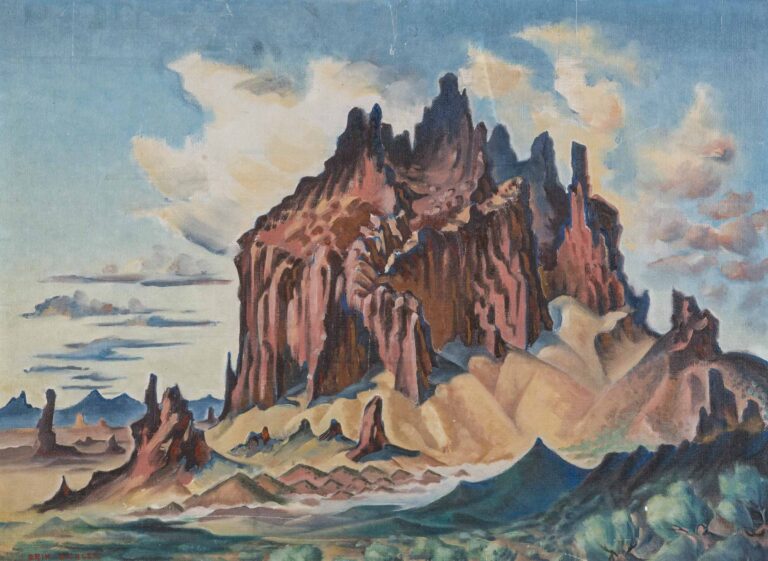Today, Erik Barger is practically unknown, perhaps because his life and promising artistic career were cut short at the age of 42.
Originally from Iowa, Barger first established himself professionally in Gloucester, MA, after studying at the Cincinnati Art Academy (in Ohio). In Gloucester, he completed numerous paintings and commissions—many for one patron in particular, Natalie Hays Hammons. At some point in the 1930s, Barger moved to Denver, CO, where he lived with his mother and worked as the technical director of the University Civic Theatre at the University of Denver.1
By the early 1940s, Barger had relocated to New Mexico. According to one contemporary report, he “first came into public notice with his seascapes of the craggy eastern seaboard.”2 He promptly transitioned to painting southwestern subjects, and joined the tail-end of the New Deal, receiving a solo show of thirteen watercolor paintings at the Gallup Art Center in January 1942.
Barger exhibited in New Mexico for the rest of the decade, although his work received mixed reviews. In his critique of a show at Albuquerque’s La Quinta Gallery in 1943, one pundit was not encouraging: “At first glance, Barger’s work is rather confusing. The sheets seem to be a disordered mass and to move. All of his lines are obvious, and they are frequently broken, short, and jerky. His color is bright.”3 Yet three years on, his painting Navajo Church Rock was included in a show heralded as spotlighting “New Mexico’s future masters.”
Sadly, Barger would not fulfill this potential. He died in 1951, having worked as an engineer for Kirtland Air Force Base during the second half of the 1940s, and after his mother and brother had joined him in Albuquerque.


